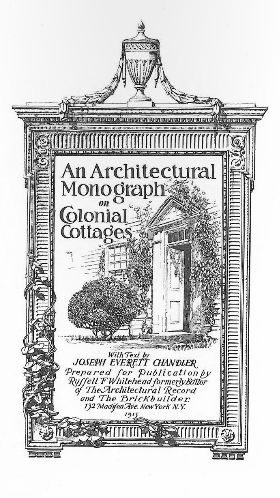This issue of the historic White Pine Series of Architectural Monographs explores the earliest wooden structures of Connecticut, celebrated as excellent surviving examples of simple yet elegant colonial architecture. Thanks to a certain notorious American traitor, who ordered his British command to loot and burn the town of New London in 1781, this monograph focuses on 17th century Connecticut houses in the river towns and their offshoots, especially New Haven. Some of these date back as early as 1636.
“That means to say that most of our material is drawn from the New Haven settlement, for, thanks to the gentle incendiary attentions of Benedict Arnold, the burning of New London left but little of the seventeenth century work undestroyed in that city.”
The number of affluent, influential landowners who settled in these towns led to substantial estates, but there are also houses built by people who weren’t quite as well-off, which are described by the authors here as “by no means contemptible.” Many still stood by 1919, when this monograph was written, leaving behind a good idea of the average 17th century Connecticut dwelling.
Of course, over the years, the houses have been modified, so that the way they appear today is much different than they did nearly a century ago, let alone in the 17th century. The authors note that the additions that had already been made by 1919 were “revolting examples of proprietary vandalism.”
“All the windows, save those that have escaped the intolerable desecration of recent sashes with large panes, exhibit the double hung sashes with small panes and wide munitions that supplanted the earlier diamond-paned leaded casements in the fore part of the eighteenth century.”





